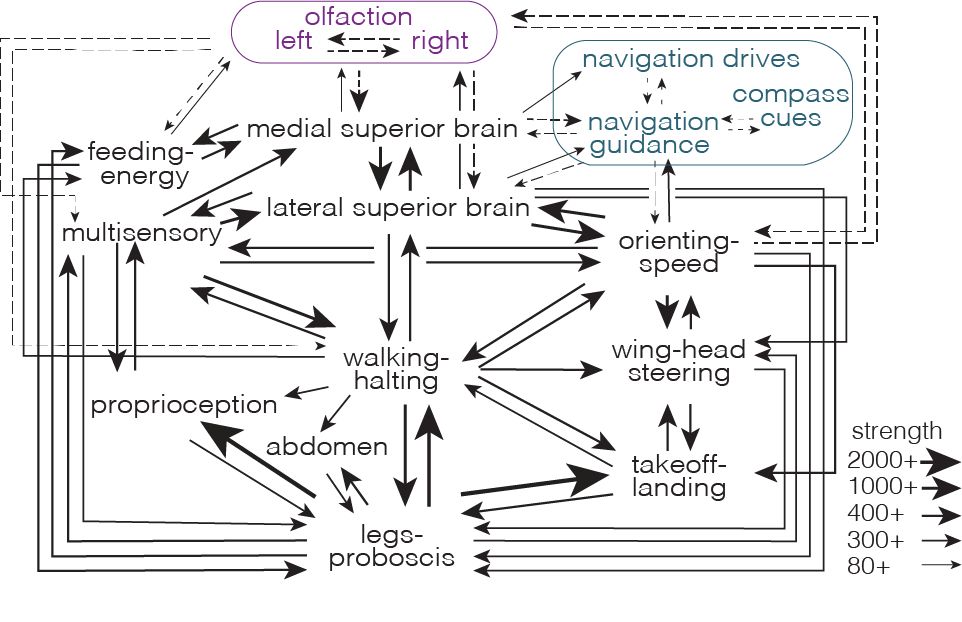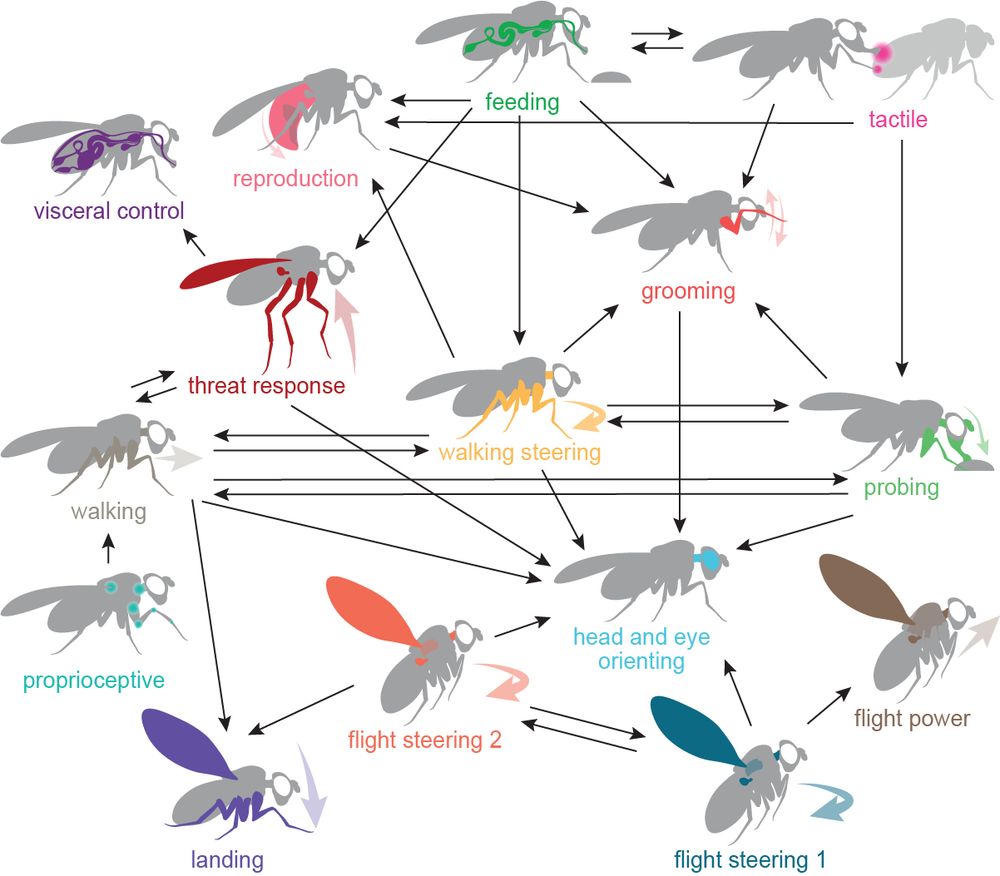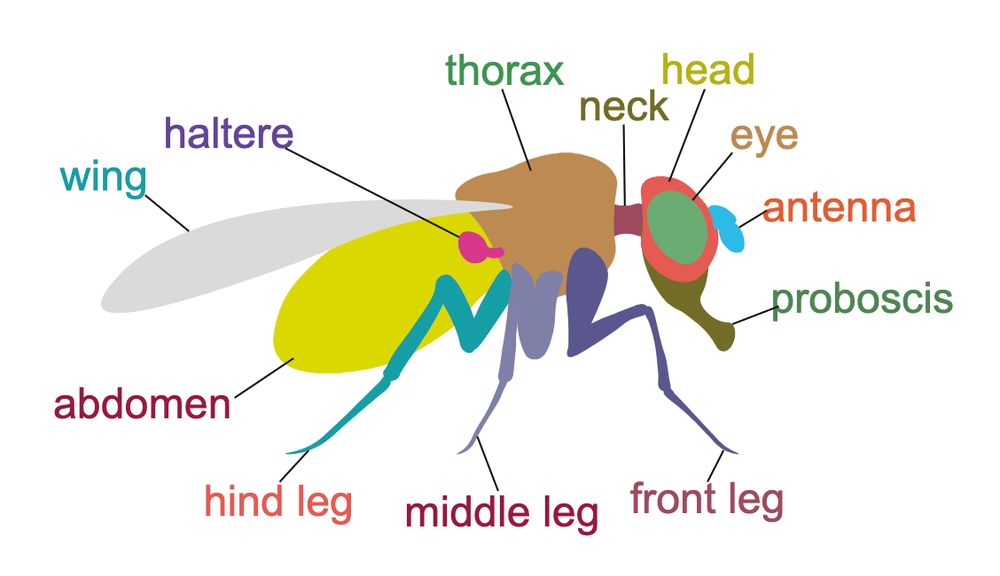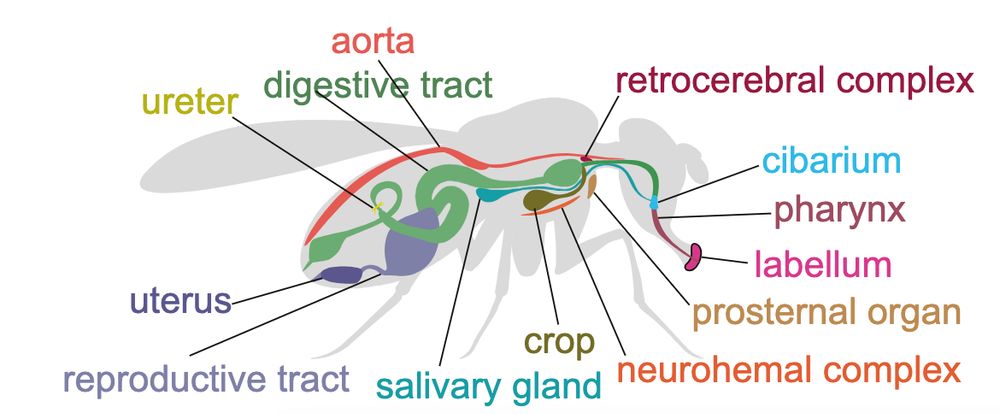Wei-Chung Allen Lee
@darbly.bsky.social
circuit motifs of action selection, execution, & refinement | functional connectomics | assoc prof | lee.hms.harvard.edu
Key annotations from: Tony Azevedo, @tuthill.bsky.social , @zandawala.bsky.social, @hokuba.bsky.social, Steffi Hampel, @andrew-seeds.bsky.social, Kathi Eichler
@jefferis.bsky.social, Michael Pankratz, @fleyes.bsky.social, & Marie Suver.
Renderings by @amysterling.bsky.social and Arie Matsliah
@jefferis.bsky.social, Michael Pankratz, @fleyes.bsky.social, & Marie Suver.
Renderings by @amysterling.bsky.social and Arie Matsliah
August 3, 2025 at 3:16 PM
Key annotations from: Tony Azevedo, @tuthill.bsky.social , @zandawala.bsky.social, @hokuba.bsky.social, Steffi Hampel, @andrew-seeds.bsky.social, Kathi Eichler
@jefferis.bsky.social, Michael Pankratz, @fleyes.bsky.social, & Marie Suver.
Renderings by @amysterling.bsky.social and Arie Matsliah
@jefferis.bsky.social, Michael Pankratz, @fleyes.bsky.social, & Marie Suver.
Renderings by @amysterling.bsky.social and Arie Matsliah
Neurotransmitter predictions from Kevin Delgado, @adjavon.bsky.social, & @janfunkey.bsky.social . Key analysis from Mohammed Osman. @sdorkenw.bsky.social & Forrest Collman for CAVE. (cont'd 2)
August 3, 2025 at 3:16 PM
Neurotransmitter predictions from Kevin Delgado, @adjavon.bsky.social, & @janfunkey.bsky.social . Key analysis from Mohammed Osman. @sdorkenw.bsky.social & Forrest Collman for CAVE. (cont'd 2)
Thanks and congratulations to others on the phenomenal team including: Arie Matsliah for Codex, its development, and integration of the BANC. Key technical work from @perlman.bsky.social & Zetta AI. Aelysia for specialist proofreading. (cont'd)
August 3, 2025 at 3:16 PM
Thanks and congratulations to others on the phenomenal team including: Arie Matsliah for Codex, its development, and integration of the BANC. Key technical work from @perlman.bsky.social & Zetta AI. Aelysia for specialist proofreading. (cont'd)
An incredible collaboration with Rachel Wilson & her lab, Zaki Ajabi & @jdrugowitsch.bsky.social @harvardmed.bsky.social; Mala Murthy, Sebastian Seung, & the FlyWire team @princetonneuro.bsky.social for their huge proofreading effort; and Ryan Maloney & @debivort.bsky.social for the specimen.
August 3, 2025 at 3:16 PM
An incredible collaboration with Rachel Wilson & her lab, Zaki Ajabi & @jdrugowitsch.bsky.social @harvardmed.bsky.social; Mala Murthy, Sebastian Seung, & the FlyWire team @princetonneuro.bsky.social for their huge proofreading effort; and Ryan Maloney & @debivort.bsky.social for the specimen.
Our data support an architecture of distributed, parallelized, and embodied control, reminiscent of “subsumption architectures” from autonomous robotics, where behavior-centric feedback loops are organized s that they can be combined or subsumed to generate complex or resolve competing behaviors.

August 3, 2025 at 3:16 PM
Our data support an architecture of distributed, parallelized, and embodied control, reminiscent of “subsumption architectures” from autonomous robotics, where behavior-centric feedback loops are organized s that they can be combined or subsumed to generate complex or resolve competing behaviors.
* Brain regions involved in learning and navigation supervise these circuits.

August 3, 2025 at 3:16 PM
* Brain regions involved in learning and navigation supervise these circuits.
* Long-range pathways are organized to permit coordination within and across modules to fine-tune, prioritize, resolve conflicts, and link related behaviors in sequences. This may offer structural substrates for behavioral compositionality.

August 3, 2025 at 3:16 PM
* Long-range pathways are organized to permit coordination within and across modules to fine-tune, prioritize, resolve conflicts, and link related behaviors in sequences. This may offer structural substrates for behavioral compositionality.
* Long-range ascending and descending neurons can combine local loops into behavioral modules.
bsky.app/profile/mott...
bsky.app/profile/mott...
For instance, we can cluster ANs and DNs based on their pre- and postsynaptic connectivity, comparing against those with known functions as well as their influence onto effectors to assign a putative behaviors.

August 3, 2025 at 3:16 PM
* Long-range ascending and descending neurons can combine local loops into behavioral modules.
bsky.app/profile/mott...
bsky.app/profile/mott...
Using the this influence metric, we find:
* Local sensorimotor loops linking matched sensors and effectors are basic building blocks of behavioral control.
* Local sensorimotor loops linking matched sensors and effectors are basic building blocks of behavioral control.

August 3, 2025 at 3:16 PM
Using the this influence metric, we find:
* Local sensorimotor loops linking matched sensors and effectors are basic building blocks of behavioral control.
* Local sensorimotor loops linking matched sensors and effectors are basic building blocks of behavioral control.
Moreover, Zaki Ajabi developed a computationally efficient method for quantifying the “influence” any neuron has on any other neuron in the CNS. We applied this method to estimate the pairwise interactions between all cells in the CNS, amounting to more than 20 billion influence scores.

August 3, 2025 at 3:16 PM
Moreover, Zaki Ajabi developed a computationally efficient method for quantifying the “influence” any neuron has on any other neuron in the CNS. We applied this method to estimate the pairwise interactions between all cells in the CNS, amounting to more than 20 billion influence scores.
The dataset includes ~160,000 cells, segmented nuclei and mitochondria, synapses and neurotransmitter predictions, and annotations linking the CNS to peripheral sensory, motor, and visceral systems.
Info: banc.community
Data: codex.flywire.ai?dataset=banc
Viewer: ng.banc.community/view
Info: banc.community
Data: codex.flywire.ai?dataset=banc
Viewer: ng.banc.community/view
August 3, 2025 at 3:16 PM
The dataset includes ~160,000 cells, segmented nuclei and mitochondria, synapses and neurotransmitter predictions, and annotations linking the CNS to peripheral sensory, motor, and visceral systems.
Info: banc.community
Data: codex.flywire.ai?dataset=banc
Viewer: ng.banc.community/view
Info: banc.community
Data: codex.flywire.ai?dataset=banc
Viewer: ng.banc.community/view
The BANC is the first connectome that explicitly links the brain to the nerve cord, & through it, to the body. It offers a new “embodied” perspective for connectomes, one that changes how we think about neural networks for control, behavior, & even artificial intelligence.
bsky.app/profile/mott...
bsky.app/profile/mott...
I think the "embodiment" of this connectome is going to be such a hit: For instance take the interactive "body part" maps on Codex, where you can simply click on your favorite external or visceral part and it will show you all of the neurons associated it! codex.flywire.ai/app/body_par...


August 3, 2025 at 3:16 PM
The BANC is the first connectome that explicitly links the brain to the nerve cord, & through it, to the body. It offers a new “embodied” perspective for connectomes, one that changes how we think about neural networks for control, behavior, & even artificial intelligence.
bsky.app/profile/mott...
bsky.app/profile/mott...
Thanks to those that supported the work including: @wellcometrust.bsky.social, @klingensteinorg.bsky.social, @simonsfoundation.org, @sloanfoundation.bsky.social, Searle Scholars Program, the Smith Family Foundation, and the Pew Charitable Trusts.
August 3, 2025 at 3:51 AM
Thanks to those that supported the work including: @wellcometrust.bsky.social, @klingensteinorg.bsky.social, @simonsfoundation.org, @sloanfoundation.bsky.social, Searle Scholars Program, the Smith Family Foundation, and the Pew Charitable Trusts.
These results offer a new view of how host cues are processed in the mosquito brain and comparative and evolutionary perspectives on neuronal circuits.
Congrats to the authors and collaborators including Jialu Bao and Wesley Alford who lead this effort!
Congrats to the authors and collaborators including Jialu Bao and Wesley Alford who lead this effort!
August 3, 2025 at 3:51 AM
These results offer a new view of how host cues are processed in the mosquito brain and comparative and evolutionary perspectives on neuronal circuits.
Congrats to the authors and collaborators including Jialu Bao and Wesley Alford who lead this effort!
Congrats to the authors and collaborators including Jialu Bao and Wesley Alford who lead this effort!
Using a connectome-informed computational model, @briandepasquale.bsky.social showed that recurrent primary sensory connectivity boosts the downstream neurons output under realistic background odor conditions, meaning recurrent synapses make CO₂ detection robust, even in a noisy world.

August 3, 2025 at 3:51 AM
Using a connectome-informed computational model, @briandepasquale.bsky.social showed that recurrent primary sensory connectivity boosts the downstream neurons output under realistic background odor conditions, meaning recurrent synapses make CO₂ detection robust, even in a noisy world.
Compared to recent fruit fly connectomes, this massive increase in recurrent connectivity and ribbon-like synapses was unique to CO₂ circuitry in the mosquito.

August 3, 2025 at 3:51 AM
Compared to recent fruit fly connectomes, this massive increase in recurrent connectivity and ribbon-like synapses was unique to CO₂ circuitry in the mosquito.
At some of these recurrent sensory neuron contacts, we found ribbon-like presynaptic structures, these had previously only been seen in vertebrates. In vertebrate neurons, ribbon synapses are thought to enable sustained or graded transmission. These could further enhance recurrent signaling.

August 3, 2025 at 3:51 AM
At some of these recurrent sensory neuron contacts, we found ribbon-like presynaptic structures, these had previously only been seen in vertebrates. In vertebrate neurons, ribbon synapses are thought to enable sustained or graded transmission. These could further enhance recurrent signaling.
We find high recurrent connectivity between the sensory neurons that detect CO₂. Surprising because such neurons are thought to be independent sensors, averaged to reduce noise. Coupling them together could amplify noise, but could lead to higher sensitivity or longer signaling (more on this later).

August 3, 2025 at 3:51 AM
We find high recurrent connectivity between the sensory neurons that detect CO₂. Surprising because such neurons are thought to be independent sensors, averaged to reduce noise. Coupling them together could amplify noise, but could lead to higher sensitivity or longer signaling (more on this later).
We used large-scale electron microscopy to reconstruct the wiring and connectivity of the CO₂-responsive microcircuit (Glomerulus 1) and its neighbors in a mosquito brain.

August 3, 2025 at 3:51 AM
We used large-scale electron microscopy to reconstruct the wiring and connectivity of the CO₂-responsive microcircuit (Glomerulus 1) and its neighbors in a mosquito brain.

